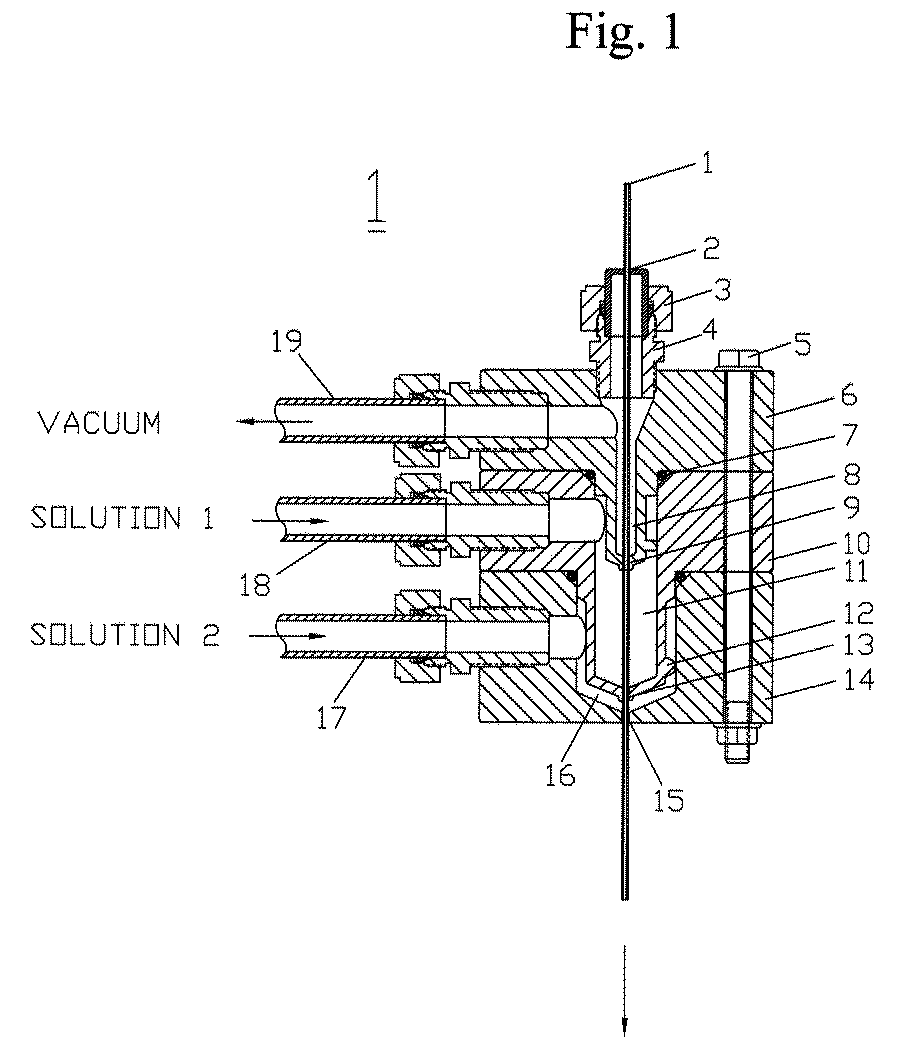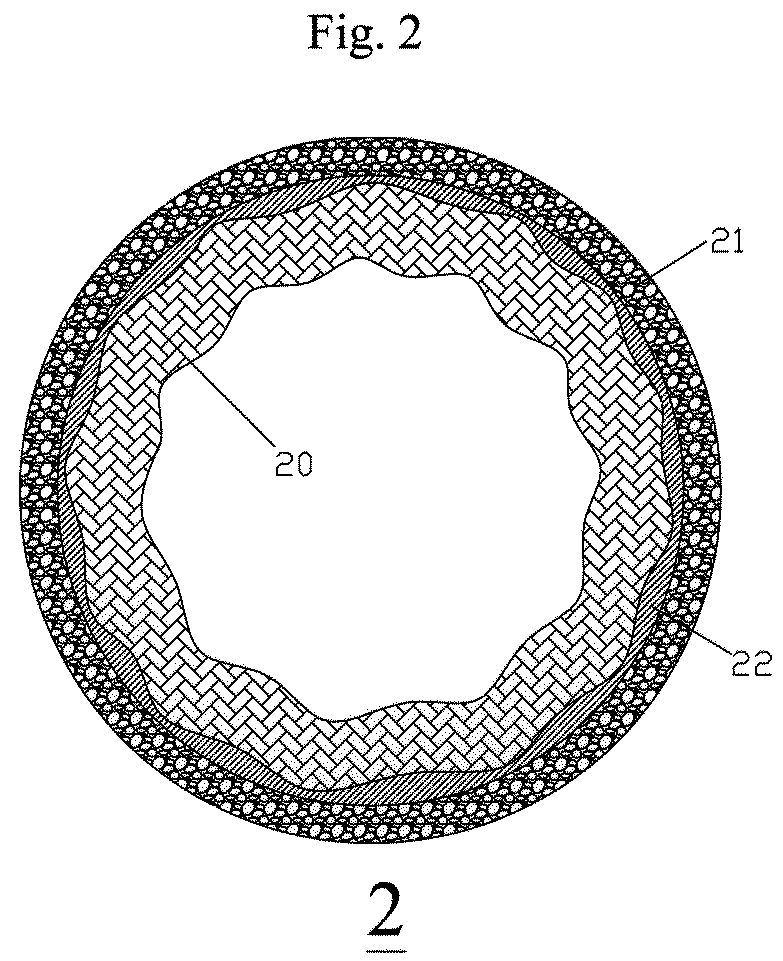Defect free composite membranes, method for producing said membranes and use of the same
a composite membrane and membrane technology, applied in the direction of moving filter element filters, filtration separation, separation processes, etc., can solve the problems of weaker membranes, thin membranes, and the polyacrylonitrile based membranes disclosed in u.s. patent no. 4,061,821 are not stable to chlorine attack, and achieve strong physical and chemical binding, strong physical adhesion, and high water permeability
- Summary
- Abstract
- Description
- Claims
- Application Information
AI Technical Summary
Benefits of technology
Problems solved by technology
Method used
Image
Examples
example 1
Effect of Vacuum Suction, poly(acrylonitrile-co-methacrylonitrile) Particles and Multiple Coatings on Membrane Performance
[0054]All of the chemicals used were purchased from Aldrich Chemicals Inc., Milwaukee, Wis. 53201. A tubular braid used as a membrane support was purchased from Atkins & Pearce Inc. One Braid Way, Covington, Ky. 41017.
[0055]A membrane casting solution (referred to herein as Dope I) was prepared by mixing 12 parts by weight of poly(vinylidene fluoride-co-hexafluropropylene) (PVDF-HFP), 5 parts by weight of poly(acrylonitrile-co-methacrylonitrile), 70 micrometer particles, 4 parts by weight of polyvinylpyrrolidone (PVP), 5 parts by weight of aluminum chloride hexahydrate (AlCl3.6H2O), 2 parts by weight of poly(vinyl butyral-co-vinyl alcohol-vinyl acetate), and 72 parts by weight of 1-methyl-2-pyrrolidinone (NMP).
[0056]A composite hollow fiber membrane was prepared by coating a tubular braid purchased from Atkins & Pearce Inc. with Dope I using a spinneret shown in ...
example 2
Effect of Vacuum Suction, Crosslinked PVP Particles, and Multiple Layer Coating on Membrane Performance
[0065]Dope II having a composition given in Table 2 was prepared in the same way as in Example 1. In Example 2, crosslinked PVP particles were used as additives to replace poly(acrylonitrile-co-methacrylonitrile) particles in Example 1. A composite hollow fiber membrane was also prepared in the same way as in Example 1, but at a higher speed of 76 ft / min. The detail conditions used to make the membrane are given in Table 2.
[0066]The composite hollow fiber membrane obtained has an outside diameter of 78 mil, a burst pressure higher than 100 psi, and a water permeability of 35 gfd / psi measured at 10 psi transmembrane pressure.
[0067]A post treatment was carried out by immersing the membrane in a 5,000 ppm sodium hypochlorite solution at ambient temperature for 5 days, the chlorine treated membrane showed a improved pure water permeability of 170 gfd / psi. Surface water obtained from Ca...
example 3
Effect of Both Crosslinked PVP Particles and poly(acrylonitrile-co-methacrylonitrile) Particles on Membrane Performance
[0068]Dope III having a composition given in Table 3 was prepared in the same way as in Example 1. However, both crosslinked PVP particles and poly(acrylonitrile-co-methacrylonitrile) particles were added to increase membrane porosity. A composite hollow fiber membrane was prepared in the same way as in Example 1, but coated at a higher speed of 104 ft / min. The detail conditions used to make the membrane are given in Table 3. The membrane obtained was characterized and the results obtained are summarized in Table 3.
[0069]Although the above illustration and discussion are focused on composite hollow fiber membrane, the formulations, methods and processes discovered in the present invention are applicable to flat sheet composite membranes, large diameter tubular composite membranes and any other composite membrane having a different geometry. Because many possible emb...
PUM
| Property | Measurement | Unit |
|---|---|---|
| Fraction | aaaaa | aaaaa |
| Pressure | aaaaa | aaaaa |
| Percent by mass | aaaaa | aaaaa |
Abstract
Description
Claims
Application Information
 Login to View More
Login to View More - R&D
- Intellectual Property
- Life Sciences
- Materials
- Tech Scout
- Unparalleled Data Quality
- Higher Quality Content
- 60% Fewer Hallucinations
Browse by: Latest US Patents, China's latest patents, Technical Efficacy Thesaurus, Application Domain, Technology Topic, Popular Technical Reports.
© 2025 PatSnap. All rights reserved.Legal|Privacy policy|Modern Slavery Act Transparency Statement|Sitemap|About US| Contact US: help@patsnap.com



